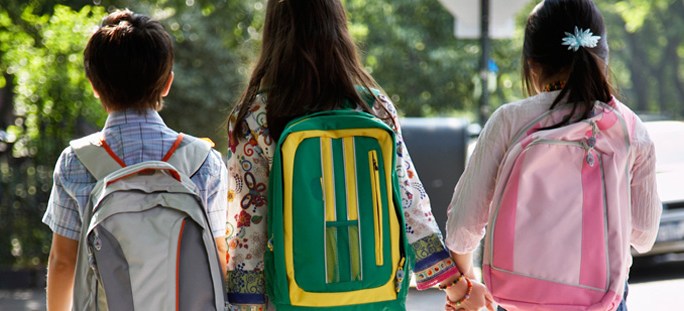
Summer is soon coming to a close, and as our little ones prepare to return to school, it’s worth taking a moment to refresh their knowledge of pedestrian safety. Busy school intersections, street crossings, and stationary and moving vehicles can all create safety hazards for kids. Preparing your kids with some basic pedestrian safety tips can help make their daily journey to and from school safer and more enjoyable.
Teaching Basic Skills
Teaching children proper street crossing procedures can be essential in helping them develop awareness of their surroundings and improving their safety. The CDC and Safe Routes to School offer a wealth of resources designed to teach youngsters the skills for walking to and from school safely, including coloring books, route planners, and videos. Among the basic child safety lessons they recommend include:
- Obey all traffic signs and signals, and walk across the road, do not run, says Safe Routes to School.
- Kids should be taught to only use designated crosswalks, such as at traffic lights or marked school crossing spots, says the CDC.
- Teach kids to look left-right-left before crossing, and to continue doing so while they cross, according to Safe Routes to School.
- If walking in the dark — such as in early morning or evening hours — wearing reflective clothing or carrying a flashlight is important for visibility says the CDC.
Bus and Vehicle Safety
In general, says NHTSA.gov, school buses are the safest means of transporting kids to and from school. But even school buses can pose hazards to kids while they are boarding, disembarking or crossing streets. The National Highway Traffic Safety Administration has an entire page dedicated to child school bus safety full of useful tips and resources for parents & kids. The NHTSA and SaferCar recommend kids understand the following:
- Keep your distance from the bus. If you must cross in front of it, use the sidewalk to walk at least 10 feet (five giant steps) in front of the bus before crossing, and be sure the driver sees you first. When disembarking, step onto the sidewalk and at least 10 feet away from the bus before continuing, says the NHTSA.
- Never walk behind the bus — and never play near the bus. It can begin moving at any time, says SaferCar.
- If you drop something near the bus, tell the driver instead of picking it up yourself, says SaferCar.
Other vehicles, including parked ones, may pose threats, too, says WellnessJunction. Kids should avoid entering the street from behind bushes or shrubs or between parked or moving vehicles. Not only can parked vehicles begin moving at any time, but both cars and greenery can make kids less visible to oncoming traffic.
Most importantly, says the CDC, kids should understand that moving vehicles are always to be avoided — even if they’re moving slowly, such as in a school parking lot. Kids should walk on sidewalks or clearly marked walking routes away from moving vehicles.
Kids Are at Higher Risk
Safe Routes to School says children often act before thinking or may lack certain types of situational awareness, such as the ability to judge how quickly a car is moving toward them.
For these reasons, it’s best to supervise child pedestrians and provide adult accompaniment whenever possible. The NHTSA says kids under 10 often lack the ability to manage traffic situations by themselves and need supervision.
With proper supervision and walking and traffic awareness skills, most kids can learn how to walk to and from school without much difficulty. So, add pedestrian safety to the list of skills your kids can and should master as they return to school this year.
Source: https://al.st/2MqJWID

